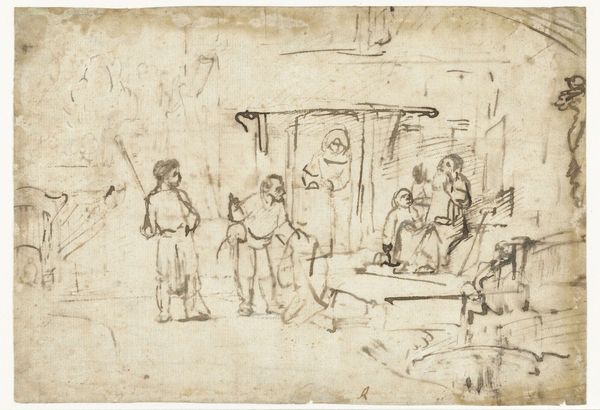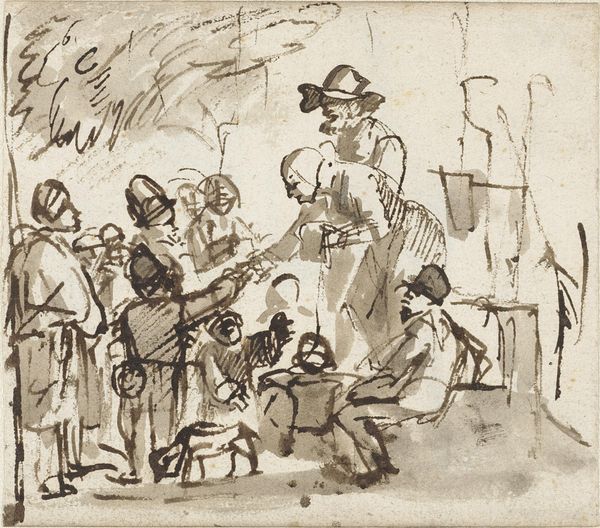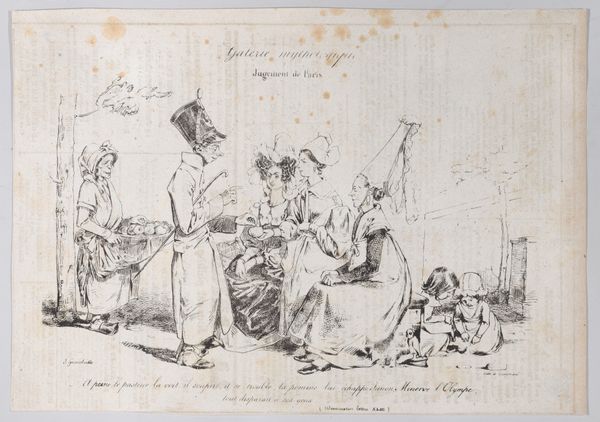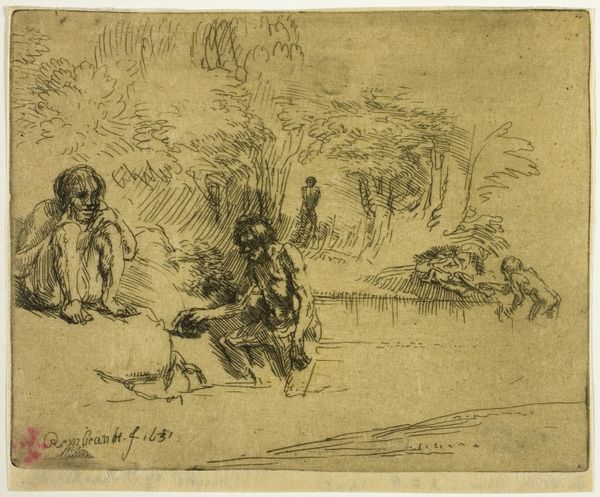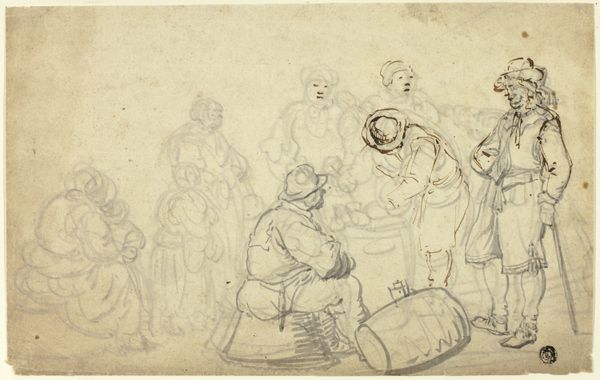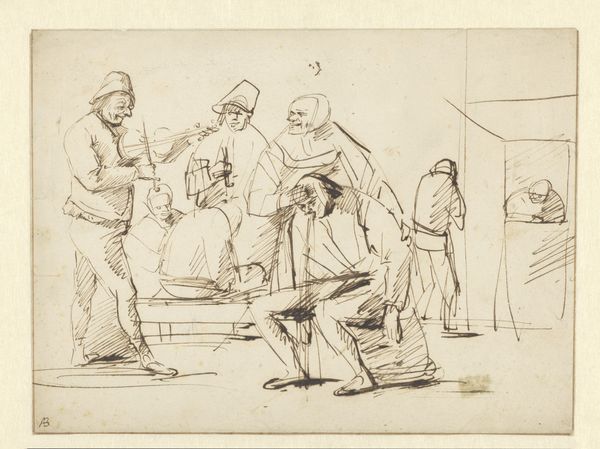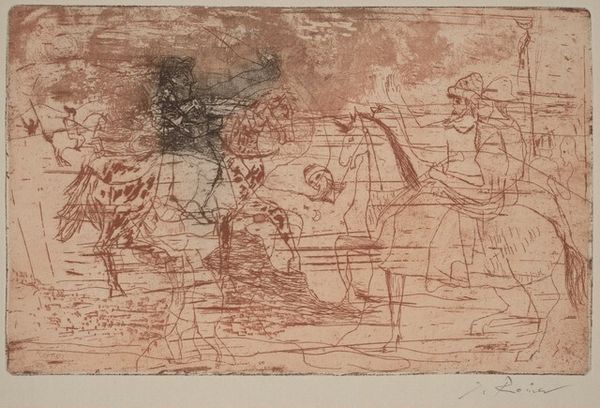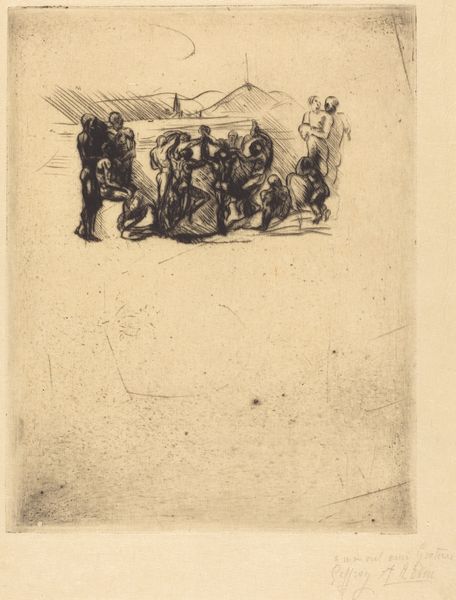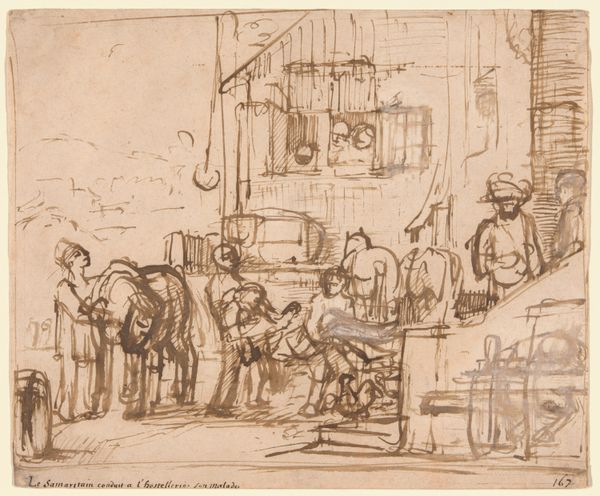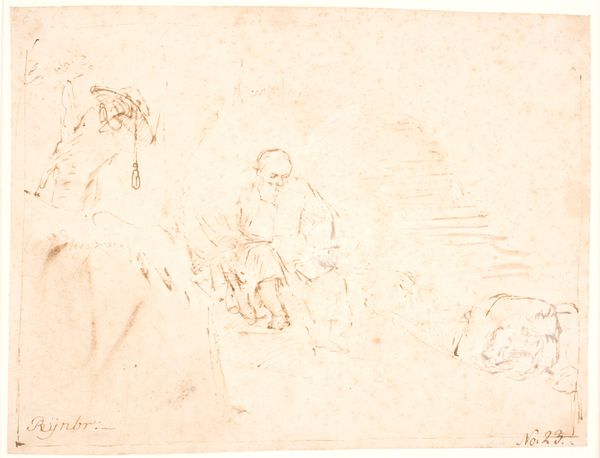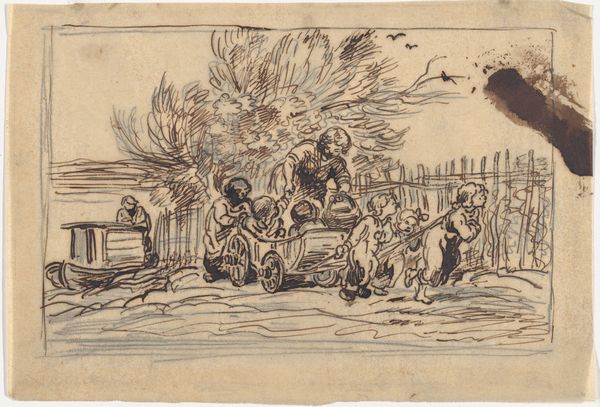
drawing, paper, ink
#
drawing
#
landscape
#
figuration
#
paper
#
ink
#
romanticism
#
genre-painting
Dimensions: 113 mm (height) x 167 mm (width) (bladmaal)
Curator: We're looking at "A Neapolitan Fishing Family on the Beach" by Martinus Rørbye, created around 1840 using ink on paper. The figures are loosely sketched. What strikes you about it? Editor: It feels very immediate, like a quick sketch capturing a fleeting moment. The materials seem simple – ink on paper – yet they convey a sense of daily life. What stands out to you about Rørbye’s choice of materials and how they inform the content? Curator: The use of readily available materials—ink and paper—points to a certain accessibility. This isn't a grand history painting in oil, commissioned by the elite. It suggests Rørbye was interested in capturing the everyday life of the working class. We must consider, then, what kind of labor this image itself represents, both the labor of the fisher folk depicted and the labor of Rørbye sketching in that very space. How might that affect the way he sees, and shows, his subject? Editor: So, the accessibility of the materials reflects the accessibility, perhaps even the value, the artist placed on the subject matter itself? How does that affect the overall feel, different from say, a staged studio portrait? Curator: Precisely! It gives a sense of immediacy, doesn’t it? Think about the production of this drawing in relation to the scene itself. Is it romanticized, perhaps, or something more akin to reportage, or even tourism? Are we invited to consider this image from the perspective of an imagined consumer? Editor: I never thought about it that way, it really makes me question my initial reaction to it as just a quick sketch. Curator: It's about considering how art is produced and consumed, even something as seemingly simple as an ink sketch. We must investigate not only the image, but the act of its making as social labor. Editor: It’s fascinating to think about the layers of labor embedded in this artwork, from the fishing family's to Rørbye's own. I’ll never look at a “simple sketch” the same way again.
Comments
No comments
Be the first to comment and join the conversation on the ultimate creative platform.
